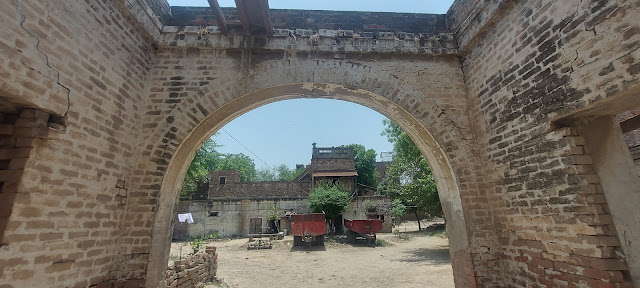13th June 2023
(All images copyright 2023 Mirza Ali Usman Baig, text written in this article is the author's Research)
The village of Shah Di Khoi Fateh Singwala, located within Punjab University in Lahore, has undergone a remarkable transformation over the years, evolving into a thriving modern town. The village's name, Shah di Khoi, holds a significant historical legacy, with roots stretching back nearly four centuries. Its origins can be traced to the 17th century when Hazrat Sheikh Abul Maali (RA), a highly respected Islamic scholar and saint, migrated from Shergarh to Lahore. In search of a tranquil setting for his religious and spiritual practices, he selected the picturesque location where the village of Shah di Khoi now stands. This site became his sanctuary for engaging in Chilla, a period of seclusion and intense devotion encompassing prayer, meditation, and introspection.
The village owes its name to the presence of a well at the Chilla site, aptly referred to as the "Well of Shah." This enduring connection to Hazrat Sheikh Abul Maali (RA) adds a profound sense of spirituality to Shah di Khoi.
Moving forward in time, we encounter the fascinating history of Sardar Fateh Singhwala's Haveli, an architectural gem that preserves the heritage of the village. During the reign of Raja Ranjeet Singh, it was customary to grant land and properties to his esteemed courtiers and loyal army officers. Sardar Fateh Singhwala's great-grandfather held a prominent position as a commander in Ranjeet Singh's army, and as a testament to his service, he was bestowed with valuable land in the 19th century. Over the years, this land passed down through generations, ultimately becoming the inheritance of Sardar Fateh Singh Wala in the 20th century.
Fateh Singh, belonging to the lineage of Shah di Khoi, achieved notable positions within the Sikh royal court and later attained high ranks during British colonial rule. His inheritance encompassed not only the Haveli but also eleven villages and vast stretches of land during the British era. Fateh Singh himself served as a government official under British rule and held a prestigious ministerial position in the Patiala and East Punjab Estate Union. These achievements further solidify the historical significance of Shah di Khoi and its association with the illustrious Fateh Singh.
Delving into the architectural features of the Haveli, we discover remnants of its grandeur. While the main entrance, adorned with an arched gateway, still stands as a testament to its former glory, the wooden panels that once embellished it have vanished or fallen victim to theft over the passage of time. Constructed in the 20th century during the British period, the Haveli exudes a distinct architectural style reflective of that era. Despite the challenges faced by many historical structures, the boundary wall surrounding the Haveli remains intact, symbolizing the resilience and endurance of the past.
Stepping inside the Haveli, we encounter a glimpse of its former splendor. The living quarters, arranged around a central courtyard, were once a hub of activity and social gatherings. Sadly, many of the original rooms have succumbed to the passage of time and undergone demolition. However, a poignant reminder of the Haveli's past remains in the form of a wooden balcony, standing proudly in one of the quarters. This surviving element serves as a tangible link to the rich history that unfolded within these walls.
Regrettably, the fate of the Haveli of Fateh Singh Wala is shrouded in controversy. As a disputed property, access to its interior is restricted, denying us the opportunity to explore its hidden treasures and unravel the stories locked within its walls.
It is interesting to mention here in Lahore, there is another pre-partition village located in the vicinity of a newly populated society of Bahria town in Lahore outskirts. The village was also named after Fateh Singh.

















Sir your keen knowledge and research of hidden gems of history of Lahore are much appreciated. The way you enlightening the things which are not well known traditionally is just amazing. You really mesmerize the reader.
ReplyDeleteGreat Work
ReplyDelete